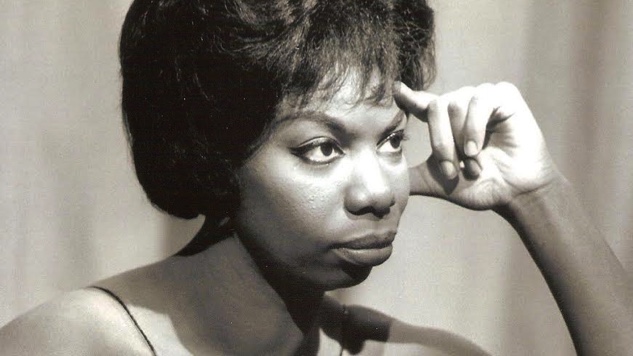
How early?
All of these tracks were recorded before the June, 1964 Civil Rights Legislation.
Segregation was still fully the law in much of the land. The Civil Rights Movement had not yet come fully to fruition. Television, guided by the political and economic power structures of America, was still punitively black and white.
Today, some nostalgically call for a return to those good old days. But as Moms Mabley declared: “What good ole days? I was there. Wasn’t no good ole days.”
As a young teenager I first saw Nina singing on television, “I Loves You Porgy“. Even though I was not fully aware of where the music came from or what the song meant, I was moved to my core. That moment was the beginning of a life long fascination that never faded.
Even at an early age, I was overwhelmed with the desire to be loved by someone the way this woman sang concerning some fortunate fella named Porgy. I imagined love like that was top shelf.
However as childhood dreams collided with adolescent realities, as well as with budding adult gropings through the actualities of life, the romance turned into the often contradictory existence of what happens when we try (so very, very hard) to live our dreams. Instead of sweet fantasies, what we engaged with and end up entangled in are bittersweet actualities.
Yes, we probably have had some wonderful moments, but those remembered reveries actually took place at the same time as our youthful hopes were dashed and replaced by the checkered ups and downs of what love inevitably means for most of us as we valiantly, but too often vainly, try to make our particular coming of age experiences more than the typical swan songs of the hum-drum, daily slogs that replace romance in most of our lives.
In truth, reality fractures romance. Reluctantly we realize that life is about far more than our own personal feelings and beliefs. As we intimately engage with others, we are forced to confront and deal with the contradictions of life as a social experience. Furthermore, for most of us, moving through America’s 20th century, life was no walk in the park.
What Nina did for me was teach me that we are not the only ones who suffered. Nor the only ones who rebelled. When she uttered “Pirate Jenny“, that controversial German song both was and wasn’t definitely about us. There was an unmistakable confrontational tone that made clear that for Nina, this was far, far more than a show tune.
For me this song marked the beginning of Nina’s overtly activist phase–but the truth needs to be told, Nina was always using her art to engage or confront her social environment.
Whether we (or especially anybody else) realized the reality or not: to be black is to be human, and to be human in America meant, and continues to mean, we either resist or we submit to the dehumanizing views, values, and ultimately to the authority of white supremacy. Particularly when that supremacy is often a shorthand for excluding the experiences of the majority of humanity and requiring that rather than celebrate our non-white selves, we are encouraged, indeed cajoled into striving to become other than who we naturally are.
We are no mere hewers of wood and drawers of water. We are not destined to be servants and slaves. Defined as lesser when compared to those who would consider themselves our masters. Humanity is neither all white, nor all male, and certainly not all rich. We must move beyond socially enforced boundaries. To live fully requires that we break out of restrictive boxes.
For us, to be or not to be is not a question, but rather is a choice we must make to live or to die struggling to live. To quote our poet, Claude McKay, “If we must die. . .” let it be “. . . fighting back!”
# # # # # # #

As a bonus, here are live versions of some of Nina Simone’s classic interpretations.
